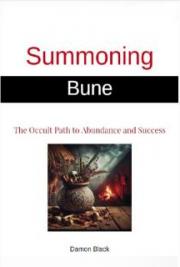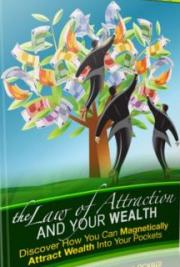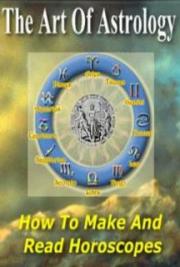Introduction
"Learning about a human being is a lifetime's task"
Paul Tunde Raji (Bsc. Accounting) http://www.webneur.com
Dear Friend, the first step is what counts
Welcome and congratulations!
You have just taken a huge, first step towards boosting your sales-potential.
You’ve made it farther than 90% of businessmen ever do. You’ve been
exploring your options and we’ve connected through the power of the
Internet.
To support your informed decision, I have spent countless hours and
hundreds of dollars on research and developing this information product.
And, I simply want to make sure you know that I really appreciate your
purchase.
Thank You!
Sincerely, you are one of life’s few decision-makers and action takers. I admire those qualities greatly. And, you should know that I intend to do
everything within my power to see that your decision will prove to be the
right decision.
I’ll even go as far as to say: Your decision to purchase this ebook – as far as
having a tremendous increase in sales performance is concerned – is
probably going to be the wisest decision you will EVER make!
Here’s why:
You are about to learn the real secrets to consumers’ “buying behavior” using
this ebook with virtually no additional cost. I will also reveal to you the most viable place where you could sell any product or service for “hungry and
thirsty” consumers.
Copyright © 2007 by Paul Tunde Raji
- 8 -
http://www.webneur.com/
"Consumers Buying Secrets REVEALED!"
Page 9 of 76
And, you should know right off the bat that the information you are about to
read totally delivers on every promise made on my web site. What’s more,
everything you are about to read is not just mere theory. It is hard-won,
tested and proven solution/discovery and theory.
Copyright © 2007 by Paul Tunde Raji
- 9 -
http://www.webneur.com/
"Consumers Buying Secrets REVEALED!"
Page 10 of 76
Consumer Behavior
Consumers consist of individuals, households, and corporate bodies that buy
products or services. They are widely varied in the way they react to
products and other stimuli. Each consumer is a decision-making unit who
collects information and uses many dimensions to analyze it. The resulting
decision is the purchase or rejection of a product or service.
The difference in consumers and factors that they consider to make a
purchase decision are important to marketers. Marketers need to understand
the type of stimuli that can yield a favorable response from consumers and
also to identify the factors and interactions that go into decision-making.
The careful study and understanding of consumers requires the marketer to
design an effective marketing plan.
Marketers’ success anchors on the extent to which they understand and
respond perfectly to the behavior of consumers. They are compelled to
search for new ideas, theories and principles from behavioral sciences such
as Anthropology, Sociology, Psychology and Economics.
It has been discovered that consumers involve considerations from these
perspectives when making their purchase decisions. Consumer behavior is
known to be an element of human behavior that deals with how people
interact with his or her environment, particularly in order to purchase and
after purchasing a product or service.
For a marketer to penetrate the hearts of many consumers and to let them
react positively to his products or service, understanding the behavior of a
consumer is inevitable. The reason is because the knowledge acquired about
the consumers has an important role to play for the marketers’ success.
In modern business, every organization needs to learn buyer’s behavior. The
outcome of the study helps the company to know WHO the consumers are,
Copyright © 2007 by Paul Tunde Raji
- 10 -
http://www.webneur.com/
"Consumers Buying Secrets REVEALED!"
Page 11 of 76
WHAT, WHERE, WHEN and WHY they prefer a particular product to other
competing products.
The theme of marketing philosophy is “consumer sovereignty” which states
that consumer is king and all the activities performed by an organization
should be channeled towards satisfying the needs and wants of the
consumers while at the same time trying to achieve organizational objectives
which is to make profit.
Cundiff, Still and Govoni (1973) supports this analogy by saying what the
result management is looking for in managing their departments. This is not
only to satisfy consumers’ needs, wants and desires, but to also facilitate
achievement of company goals.
In an economy with freedom of choice, the principle of “consumer
Sovereignty” dictates that the consumer ultimately determines a firm’s
continued existence and performance. Consumer behavior will determine the
fate of the enterprise because for an efficient and effective allocation of
resources to be achieved, those who produce products and services cannot
passively place their wares before the public. There is an additional and
dynamic function to be performed which is their reason for seeking to satisfy
the needs and desires of those who purchases and consumes these products
and services.
The essence of marketing therefore is to analyze the process through which a
group of people make and carry out buying decisions, identify the buyers and
buying decision process.
Although many buying decisions involve only one decision maker other
decisions may involve several participants who play such role as initiator,
influencer, decider, buyer and user. The marketer’s job is to identify the
other buying participant, their buying criteria, and their level of influence on the buyer.
Copyright © 2007 by Paul Tunde Raji
- 11 -
http://www.webneur.com/
"Consumers Buying Secrets REVEALED!"
Page 12 of 76
A consumer's experience has been widened by his or her exposure to
competing products, rapid changes in technology which result in regular
availability of innovative products, socio- economic and other environmental
changes, all these conditions in which consumer are subjected to, make them
to be complex and more unpredictable to deal with.
Copyright © 2007 by Paul Tunde Raji
- 12 -
http://www.webneur.com/
"Consumers Buying Secrets REVEALED!"
Page 13 of 76
The Buying Decision Process
When making a decision to buy a product from many competing products, a
consumer unknowingly passes through a few stages of the decision process.
There are five stages and each stage motivates the buyer to purchase. Only
one stage is concerned with actual purchasing. Sometimes, the consumer
does not pass through all the five stages before purchasing a product.
Need Arousal is the first stage of a buying decision process. The need for a given product is activated by internal and external stimuli. The marketer
creates awareness for his product through sales promotion and advertising.
The external stimuli helps to arouse the consumer’s need for the product
while internally, physiological imbalance such as hunger, thirst, warmth, etc.
which are primarily unlearned makes a person recognize a need. The
consumer recognizes a significant difference in his perceived desire and
actual position. He thereafter responds by searching for a product that can
satisfy the identified need.
The consumer having sufficiently been motivated to satisfy a need searches
for information about every product brand that can perfectly match the need.
If a suitable product is available for an urgently felt need, the consumer
quickly purchases the product. However, in most cases, consumers do not
purchase products immediately the products are brought to their awareness.
At this stage, consumers look for further information, and the intensity and
duration of this depends on their past experience together with the
importance of the product.
Different products are identified through intensive and passive searches.
Passive search involves the consumer reading information about the product
on the Internet or in newspapers, magazines and other published materials.
Intensive, or heightened search is where the consumer actively searches for
information from many sources, while moving from one place to another.
These sources include personal sources such as family, friends, neighbors,
Copyright © 2007 by Paul Tunde Raji
- 13 -
http://www.webneur.com/
"Consumers Buying Secrets REVEALED!"
Page 14 of 76
acquaintances, associates and members of his social group whose opinions
he trusts and respects.
Commercial Sources
The consumer pays close attention to commercial messages through
advertising, packaging, talking to salespeople, sales promotion and point of
purchase displays.
Public Sources
These provide messages from mass media publicity, government reports,
news and product-testing companies.
These messages are objective, reliable and factual. The motivated consumer
tries to get a feel for the product through his senses. He tastes a sample,
tests the product during a demonstration by the salesperson; this can be
achieved by having a trial or testing period, where he can handle the product
to judge its suitability. All these sources present the consumer with a large
number of alternative products and information on the features of the
product, like packaging, operating manual, pricing, warranty, etc. The
product has features or characteristics that attracts consumers/customers to
buying or using it.
Empirical research confirmed that consumers use their cognition
consciousness and rational judgment to examine products before making
their purchases.
They evaluate by comparing products in order to make a choice. Evaluation
takes the following dimensions or guiding rules: Those features of interest to
the consumers are listed for further analysis. These consist of performance,
taste, color, physical appearance, packaging, range, price etc. Consumers are
asked to list what they prefer in the product. The preferred attributes of
competing products is used to attach weight or priority or rank the attributes
to facilitate ranking, the consumer uses brand belief or image of each brand
Copyright © 2007 by Paul Tunde Raji
- 14 -
http://www.webneur.com/
"Consumers Buying Secrets REVEALED!"
Page 15 of 76
(if any) to compare one product with other products. This evaluation
establishes the position of each product in relation to the important
attributes.
Other evaluation criteria and techniques use quantitative and qualitative
models to apply objectivity. They consist of dominance, conjunctive,
disjunctive, lexicographic, expectancy and ideal-product, compensatory and
determinant models.
In the Dominance model, the customer lists all his preferred attributes and
rates all available alternative products with the attribute; the product with
superiority in many attributes over others is retained while the inferior
quality brands are dropped.
In the Conjunctive model, all products are classified into two groups
(acceptable and unacceptable) based on the minimum attributes that a
product must meet. Unacceptable products are those that fall short of
minimum specification and are eliminated from further consideration.
The disjunctive model only sets in if the consumer only has to pick from
products whose attributes exceed the specified minimum attributes.
In the Lexicographic model, a single dominant attribute which is common to
all products is used to rank them.
The product with the highest score becomes the consumer's choice. If two or
more products have the same score, the consumer uses the next best
attribute to compare each product with others. This process is repeated until
a surviving product that has the highest total score is identified while the rest are eliminated.
The Expectancy model is when the consumer identifies attributes of
importance and assigns a weight that represents degrees of preference to
each attribute. The resultant score is obtained by the aggregate of weights of
each attribute, multiplied by the performance level of the product for each
attribute.
Copyright © 2007 by Paul Tunde Raji
- 15 -
http://www.webneur.com/
"Consumers Buying Secrets REVEALED!"
Page 16 of 76
In the Ideal product model, the consumer forms an image of his ideal
product. He lists many attributes that the product must possess. If the
current products do not have the attributes he desires, he selects the one
whose attribute is closer to the ideal product. To capitalize on the opportunity offered by this model, a marketer can interview consumers to find two or
more ideal attributes of interest and build these into his product.
Under the Compensatory model, also known as Multi-attribute model, the
product chosen is the one that has the overall balance of favored features
across all attributes.
There is also the Determinant Attribute Model, which states that attributes of
importance sometimes do not significantly influence consumers choices
among competitive products whose attributes are similar.
The choice of product may be made because of a less important attribute
that differentiates the product.
Copyright © 2007 by Paul Tunde Raji
- 16 -
http://www.webneur.com/
"Consumers Buying Secrets REVEALED!"
Page 17 of 76
Nicosia Flow Chart Model of Consumer Behavior
Using a computer flow-chart system, this model shows the input, processor
and output variables together with their relationships towards reaching a
decision that will solve current and future problems of the consumer. It
assumes that the consumer does not have direct experience with a particular
product.
In addition, there are four main stages of decision present in this model.
Stage One: An advertising message about a firm and its products is
presented to the consumer who is not familiar with the product. The
consumer uses psychological, personality and environmental attributes to
examine it.
He then forms an attitude towards the product.
Stage Two: To avoid making mistakes, the consumer searches for more
information about the advertised product and its competitors. He conducts
product/service comparison, to form a more favorable attitude to a few of the
product/service options offered out of the various available alternatives.
The result of the analysis may or may not be a motivation to the advertised
product.
Stage Three: If the consumer is motivated to prefer one product to all the others, he makes the final decision to purchase.
Stage Four: The post-purchase experience gathered in the course of using
the product is stored in his memory. This data bank is used to decide
whether or not to buy the same product /service in future. This completes
the circular decision process of the consumer.
By buying the product or not, the result of the decision stage is known
(through the Feedback System) by the firm and the firm’s knowledge about
its consumer’s behavior is also completed.
Copyright © 2007 by Paul Tunde Raji
- 17 -
http://www.webneur.com/
"Consumers Buying Secrets REVEALED!"
Page 18 of 76
Marketing Implications
This model is scientific enough to help marketers gain an insight into the
consumer behavior process. By stating what happen at each stage, the firm
can apply the right marketing decision to improve the probability that the
consumer purchases the product/service.
Criticism
The research leading to construction of the model was based on a narrow
scope of advertising and how consumers accept the new product. The
research limitations and variables considered were not stated.
This makes it difficult for other interested researchers to find where they can
support and improve the model through further research. The relationship
between the stages is not as direct as the explanation states. In addition, the
descriptions and explanation accompanying the model are too brief.
How consumers form and sustain attitudes to a new product requires further
research and explanation.
Copyright © 2007 by Paul Tunde Raji
- 18 -
http://www.webneur.com/
"Consumers Buying Secrets REVEALED!"
Page 19 of 76
Engel, Kollat and Blackwell
Complete Model of Buying Behavior
This model is an improvement on the Black box model. It contains such
elements as Information input and the Processing unit (which has product
evaluation, general motivation and personal inputs). All these elements
interact and move the consumer across five decision-making stages.
It explains what happen to the inputs in the evaluation process and the type
of outputs. The black box model that contains the invisible intervening
variable, becomes the CENTRAL CONTROL UNIT (CCU). It serves as the
consumer’s psychological structure. It contains memory and manner of
thinking and behavioral pattern, personality variables, past information of
direct experience and current information.
Personality features are the stable behavior pattern of an individual that he
perceives as helpful in satisfying his needs. They are called MOTIVES.
The means of reacting to situation are called RESPONSE TRAITS. They vary
among individuals.
Both motives and traits combine in function to form a general psychological
reaction of a person. They resist change from outside influences.
Experience or past information is, consciously or unconsciously, retained in
the central control unit to make the person respond consistently to stimuli.
The consumer develops product-related values and attitudes from personality
and experience.
This gives shape to their behavior and makes the consumer form a habit for
evaluating products by choosing one product out of many alternatives.
Copyright © 2007 by Paul Tunde Raji
- 19 -
http://www.webneur.com/
"Consumers Buying Secrets REVEALED!"
Page 20 of 76
Detailed Analysis of the Model
Messages relating to the firm and a product/service are transferred to
consumers through their sense organs and are stored in the central control.
After processing it, the required response to the message is passed to the
awareness level of the consumer.
He becomes alert due to feelings of discomfort that he suffers through the
sensory receptors. The need is strengthened by a drive to find the best
solution to his need.
In his effort to satisfy the needs with the right product/service, he is exposed to many stimuli about other products.
Through a process of product/service comparison, the consumer restricts his
attention to the product that is not misleadingly promoted.
Information about the selected product is used in the next stage.
If the consumer has the financial means, he recognizes the need. He knows
that his desired condition is not yet reached. This feeling arouses a response
to satisfy the drive caused by motives and needs.
Where the consumer is unaware of his needs, the firm uses sales promotions,
advertisements, a salesperson, packaging, etc., to trigger or create
awareness. This stage is the starting point for a lengthy buying process.
Where they have little or no information on competing product/service, the
consumer may have to identify many products/services and research their
prices, suppliers, features, operating instruments (manual), packaging,
product or services etc.
He uses internal or passive methods, such as reading, review and recalling
information stored in memory that relates to the specific type of
product/service.
Copyright © 2007 by Paul Tunde Raji
- 20 -
http://www.webneur.com/
"Consumers Buying Secrets REVEALED!"
Page 21 of 76
Externally, he looks for information from his reference group, marketing
firms and salespersons connected with the product/service.
The search will present him with many possible products/services from which
he locates a group of products from which choices can be made.
The products/services are examined and compared with one another in order
to choose the best one.
The consumer compares each product on a set of criteria used for evaluating
all the product/services. The criteria may include price, features,
performance, color and packaging.
Each product/service is also rated from the reference group and
psychological viewpoints. As products have many attributes, only those
falling within the consumer’s specifications are considered.
At the end, he forms product/service image (or preference, judgment) for
some alternatives (choice set). He can buy any product or service from the
set.
At this stage, the consumer selects the best or preferred product from the
choice set. The decision may be influenced again by the positive/negative
attitudes of other people and the consumer’s willingness to comply with the
group.
Other situational factors, such as unanticipated occurrence like sickness, loss
of job, perceived risks etc., may force the consumer to modify, postpone or
avoid purchase of the product.
If these obstructions are not present, the consumers purchase the product
immediately the decision is made.
Copyright © 2007 by Paul Tunde Raji
- 21 -
http://www.webneur.com/
"Consumers Buying Secrets REVEALED!" <







